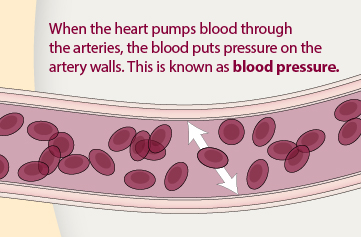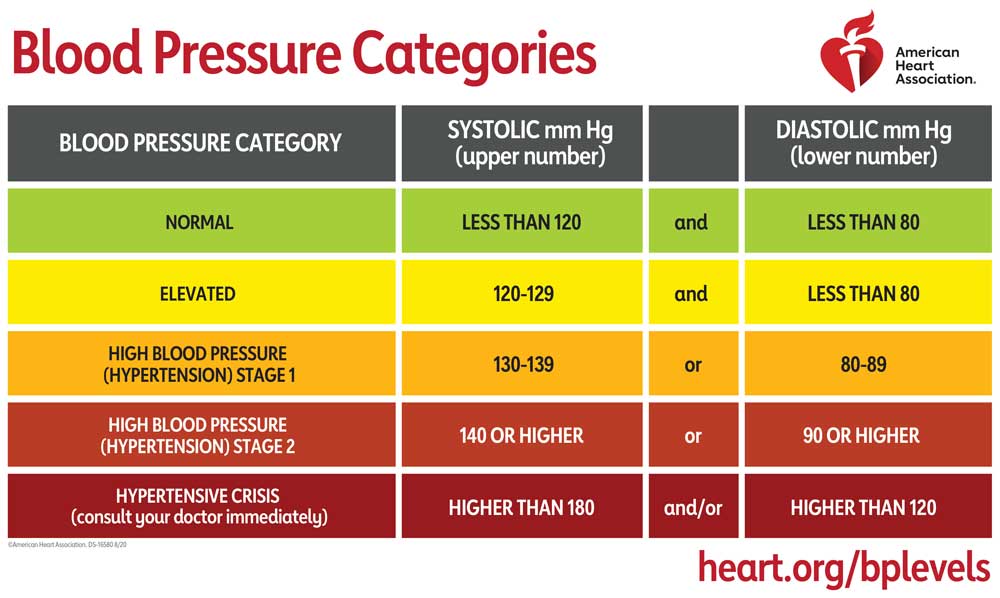What is hypertension?

Hypertension or high blood pressure, occurs when your blood pressure (BP) increases to unhealthy levels. Your blood pressure measurement takes into account how much blood is passing through your blood vessels and the amount of resistance the blood meets while the heart is pumping.
Hypertension is quite common. Hypertension typically develops over the course of several years. Usually, you don’t notice any symptoms. But even without symptoms, high blood pressure can cause damage to your blood vessels and organs, especially the brain, heart, eyes, and kidneys.
Early detection is important. Regular blood pressure readings can help you and your doctor notice any changes. If your blood pressure is elevated, your doctor may have you check your BP over a few weeks to see if the number stays elevated or falls back to normal levels.
Treatment for hypertension includes both prescription medication and healthy lifestyle changes. If the condition isn’t treated, it could lead to health issues, including heart attack and stroke.
What causes hypertension?
There are two types of hypertension. Each type has a different cause.
Primary hypertension (Essential hypertension) develops over time with no identifiable cause. Most people have this type of high blood pressure. Researchers are still uncertain what mechanisms cause blood pressure to slowly increase. A combination of factors may play a role. These factors include:
- Genetics: Some people are genetically predisposed to hypertension.
- Lifestyle: like lack of physical activity and poor diet can take their toll on your body. Lifestyle choices can lead to weight problems. Being overweight or obese can increase your risk for hypertension.
- Age: The risk of hypertension increases as you age.
- Too much salt (sodium) in your diet.
Secondary hypertension often occurs quickly and can become more severe than primary hypertension. Several conditions that may cause secondary hypertension include: kidney disease, obstructive sleep apnea, congenital heart defects, problems with your thyroid, side effects from medications, use of illicit drugs, alcohol abuse, adrenal gland problems, etc.
What are the symptoms of hypertension?
Hypertension is generally a silent condition. Many people won’t experience any symptoms. It may take years or even decades for the condition to reach levels severe enough that symptoms become obvious. Even then, these symptoms may be attributed to other issues.
Symptoms of severe hypertension can include: headaches, shortness of breath, nosebleeds, dizziness, chest pain, visual changes, blood in the urine.
These symptoms require immediate medical attention. They don’t occur in everyone with hypertension, but waiting for a symptom of this condition to appear could be fatal.
The best way to know if you have hypertension is to get regular blood pressure readings. Most doctors’ offices take a blood pressure reading at every appointment.
Diagnosing hypertension
Diagnosing hypertension is as simple as taking a blood pressure reading. Most doctors’ offices check blood pressure as part of a routine visit. If you don’t receive a blood pressure reading at your next appointment, request one.

If your blood pressure is elevated, your doctor may request you have more readings over the course of a few days or weeks. A hypertension diagnosis is rarely given after just one reading. Your doctor needs to see evidence of a sustained problem. That’s because your environment can contribute to increased blood pressure, such as the stress you may feel by being at the doctor’s office (usually referred to as White Coat Hypertension). Also, blood pressure levels change throughout the day.
How to understand high blood pressure readings
Two numbers create a blood pressure reading:
- Systolic pressure: This is the numerator or top number. It indicates the pressure in your arteries when your heart beats and pumps out blood.
- Diastolic pressure: This is the denominator or bottom number. It’s the reading of the pressure in your arteries between beats of your heart.
According to the American Heart Association (AHA), the five categories below define blood pressure readings for adults:

- Normal: A normal blood pressure reading is less than 120/80 millimeters of mercury (mm Hg).
- Elevated: The systolic number is between 120 and 129 mm Hg, and the diastolic number is less than 80 mm Hg. Doctors usually don’t treat elevated blood pressure with medication. Instead, your doctor may encourage lifestyle changes to help lower your numbers.
- Stage 1 hypertension: The systolic number ranges between 130 to 139 mm Hg, while the diastolic number is between 80 and 89 mm Hg.
- Stage 2 hypertension: The systolic number is 140 mm Hg or higher, or the diastolic number is 90 mm Hg or higher.
- Hypertensive crisis: The systolic number is over 180 mm Hg, or the diastolic number is over 120 mm Hg. Blood pressure in this range requires urgent medical attention. If any symptoms such as chest pain, headache, shortness of breath, or visual changes occur when blood pressure is this high, medical care in the emergency room is needed.
A blood pressure reading is taken with a pressure cuff. For an accurate reading, it’s important you have a cuff that fits. An ill-fitting cuff may deliver inaccurate readings.
Blood pressure readings are different for children and teenagers. Ask your child’s doctor for the healthy ranges for your child if you’re asked to monitor their blood pressure.

Trackbacks/Pingbacks